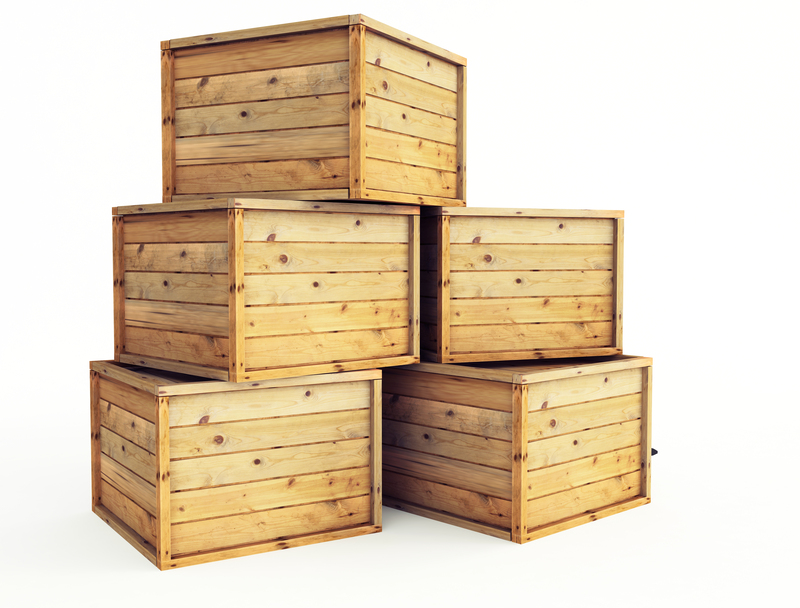Kitchen Moving Advice: Do's and Don'ts
Posted on 31/05/2025
Kitchen Moving Advice: Do's and Don'ts
Introduction
Moving can be an arduous endeavor, with every room presenting its own set of challenges. Among these, the kitchen is often the most daunting. From fragile glassware to essential appliances, moving a kitchen requires careful planning and execution. This comprehensive guide will provide you with kitchen moving advice, focusing on the key do's and don'ts to ensure a smooth transition.

Preparation Phase
One of the most critical steps in moving your kitchen is the preparation phase. The mistakes or successes during this phase could dictate the entire moving process.
Do: Create a Moving Checklist
Before you even think about packing, it's imperative to create a moving checklist. This should be as detailed as possible, breaking down tasks into manageable steps such as sorting items, purchasing packing materials, and setting deadlines.
Don't: Procrastinate
Procrastination is the enemy of a successful move. Start early, preferably a few weeks in advance, to give yourself ample time to pack properly.
Organizing Your Items
Your kitchen likely contains a wide range of items, from delicate china to bulky appliances. Proper organization can make all the difference.
Do: Categorize Your Items
Begin by sorting items into categories: utensils, appliances, pantry items, and perishables. This allows you to tackle each category methodically, ensuring that nothing is forgotten.
Don't: Mix Items
Avoid the temptation to mix items from different categories in the same box. This makes unpacking a nightmare and increases the risk of breaking something fragile.
Packing Essentials
Packing materials can significantly impact the safety and efficiency of your move. Quality packing supplies are an investment worth making.
Do: Use High-Quality Packing Materials
Spend a little extra on sturdy boxes, bubble wrap, and packing tape. Your fragile items, like glassware and ceramics, will require the best protection available.
Don't: Overpack Boxes
While it might seem efficient to fill boxes to the brim, overpacking can lead to breakages and make the boxes too heavy to carry safely. Always allow some breathing room for your items.
Labeling and Documentation
Labeling is a critical, yet often overlooked, component of a smooth move. Proper labeling ensures that you can easily find what you need when you arrive at your new home.
Do: Label Boxes Clearly
Use permanent markers to label each box with its contents and the room it belongs to. This will save you time and stress when you start unpacking.
Don't: Forget to List Fragile Items
Always mark boxes containing fragile items with a 'Fragile' tag. This alerts movers to handle these boxes with extra care.
Handling Appliances
Kitchen appliances require special attention. Improper handling can lead to damages or even void warranties.
Do: Defrost and Clean Your Fridge
If you're moving a fridge, ensure it is defrosted and thoroughly cleaned at least 24 hours before the move. This prevents any water leakage that could damage other belongings.
Don't: Ignore Manufacturer's Instructions
Refer to the manufacturer's instructions for moving larger appliances. Some may have specific requirements to prevent damage, especially those with delicate components like ice makers or complex electronics.
Food Items
Deciding what to do with your food items can be tricky. Some may perish during the move, while others may be too bulky to justify transporting.
Do: Use Up Perishables
In the weeks leading up to the move, plan meals that will use up your perishable food items. This minimizes waste and the stress of sorting through perishables on moving day.
Don't: Pack Opened or Expired Items
Avoid packing opened or expired pantry items. Moving presents a great opportunity to declutter, so only take unopened, non-perishable items with you.
Hiring Professional Movers
While you can move a kitchen on your own, hiring professional movers can alleviate much of the burden.
Do: Research Movers
Take the time to research moving companies, read reviews, and get quotes. Professional movers can offer specialized services tailored to your kitchen's needs, ensuring everything is transported safely.
Don't: Ignore Insurance Options
Check out the insurance options offered by movers. Kitchen items are often expensive, and having comprehensive insurance can provide peace of mind during the move.

Unpacking and Settling In
The finally arrived part - settling into your new kitchen. How you approach this phase can significantly affect your comfort and functionality in your new home.
Do: Unpack Essentials First
Start by unpacking essential items like cookware, basic utensils, and pantry staples. This allows you to prepare meals even if the rest of the kitchen is still disorganized.
Don't: Rush Unpacking
While it's tempting to finish unpacking as quickly as possible, rushing can lead to disorganization. Take your time to ensure everything is put in its rightful place, which will make future kitchen activities more efficient.
Conclusion
Moving a kitchen is a multifaceted task that requires careful planning and organization. By following these do's and don'ts, you can ensure that your kitchen move is as stress-free and efficient as possible. From preparation and packing to unloading and organizing, each step is crucial. Remember, the goal is not just to move but to transition into your new kitchen seamlessly, ready to cook and create delicious meals in no time. Safe moving!







